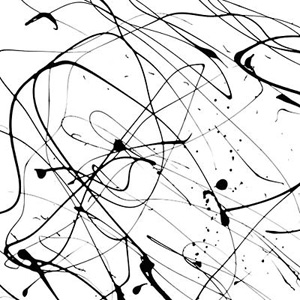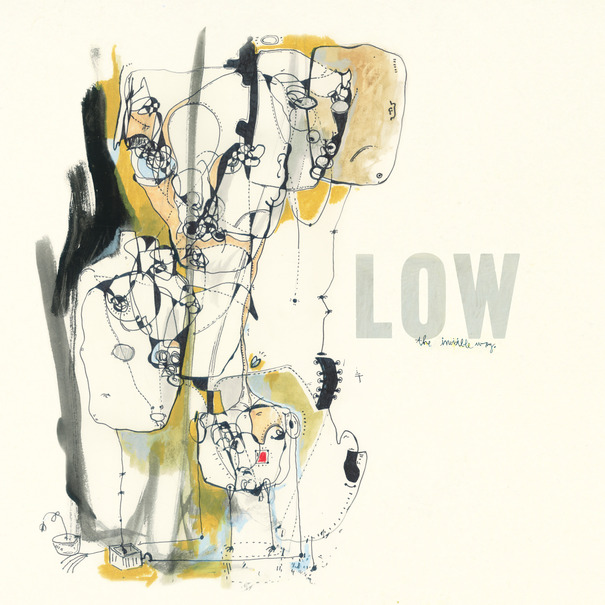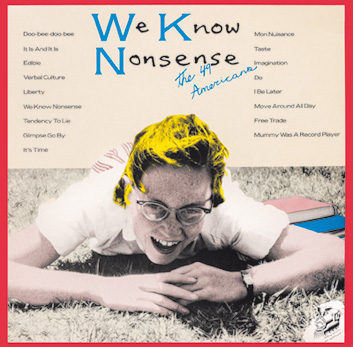 In his March 3rd interview with Ibiza Voice, Martin Müller proudly lists the synths, drum machines, and effects units he used to make Behind, his first album without youANDme partner Daniel Stroeter. Among others, he names: the Waldorf Microwave 1 and Roland Alpha Juno 2, the TR-808 and TR-909, the Jomox Xbase 888, a Verona DRM, a Moogerfooger, a Sherman Filterbank, and various other resonators, compressors, and equalizers. He loves his gear, and every song on Behind begins and ends with it. Whatever the results— jet black Detroit house, dub, ambient noise, or some other variety of electronic music— Martin’s machines matter most. Everything else comes second.
In his March 3rd interview with Ibiza Voice, Martin Müller proudly lists the synths, drum machines, and effects units he used to make Behind, his first album without youANDme partner Daniel Stroeter. Among others, he names: the Waldorf Microwave 1 and Roland Alpha Juno 2, the TR-808 and TR-909, the Jomox Xbase 888, a Verona DRM, a Moogerfooger, a Sherman Filterbank, and various other resonators, compressors, and equalizers. He loves his gear, and every song on Behind begins and ends with it. Whatever the results— jet black Detroit house, dub, ambient noise, or some other variety of electronic music— Martin’s machines matter most. Everything else comes second.
Two new shows just for you. We have squeezed out two extended release episodes for this weekend to get you through this week. They contain mostly new songs but there's also new issues from the vaults. The first show features music from Rider/Horse, Mint Field, Robert Aiki Aubrey Lowe, Anastasia Coope, ISAN, Stone Music, La Securite, Bark Psychosis, Jon Rose, Master Wilburn Burchette, Umberto, Wand, Tim Koh, Sun An, and Memory Drawings. The second episode has music by Laibach, Melt-Banana, Chuck Johnson, X, K. Yoshimatsu, Dorothy Carter, Pavel Milyakov, Violence Gratuite, Mark Templeton, Dummy, Endon, body / negative, Midwife, Alberto Boccardi, Divine. Cow in Maui from Veronika in Vienna. Get involved: subscribe, review, rate, share with your friends, send images! |



 This new album continues the trend of Michael Page's 2012 album, There I Saw the Grey Wolf Gaping, balancing massive, epic length pieces with shorter ones and a slew of diverse collaborators (Nocturnal Emissions, Vomit Arsonist, Slogun, and others) to push his work even further into its own unique, esoteric sonic space.
This new album continues the trend of Michael Page's 2012 album, There I Saw the Grey Wolf Gaping, balancing massive, epic length pieces with shorter ones and a slew of diverse collaborators (Nocturnal Emissions, Vomit Arsonist, Slogun, and others) to push his work even further into its own unique, esoteric sonic space. Mixing old with new both in technology and imagery, Montreal's Aun (Martin Dumais and Julie Leblanc) capture the audio aesthetic of time worn 1970s low budget sci fi film soundtracks via a malfunctioning TV, sometimes erring into abrasive territories, and other times coming across like lost four track Tangerine Dream demos rotting in an attic. Modern MIDI equipment clashes with unreliable analog technologies to produce a sound that is as retro sounding as it is innovative.
Mixing old with new both in technology and imagery, Montreal's Aun (Martin Dumais and Julie Leblanc) capture the audio aesthetic of time worn 1970s low budget sci fi film soundtracks via a malfunctioning TV, sometimes erring into abrasive territories, and other times coming across like lost four track Tangerine Dream demos rotting in an attic. Modern MIDI equipment clashes with unreliable analog technologies to produce a sound that is as retro sounding as it is innovative. Sachiko has been involved in the Japanese music scene since the late 1980s, but recent releases have shown a growing sense of experimentation that is as beautiful as it is dark, quite often within the same composition, such as on Loka in the Black Ship. Sometimes delicate, sometimes harsh, but never forgettable, it is a high point in a strong run of solo and collaborative records.
Sachiko has been involved in the Japanese music scene since the late 1980s, but recent releases have shown a growing sense of experimentation that is as beautiful as it is dark, quite often within the same composition, such as on Loka in the Black Ship. Sometimes delicate, sometimes harsh, but never forgettable, it is a high point in a strong run of solo and collaborative records.

 Low's newest record represents, as many past releases do for the band, an intentional and successful return to past ideas. As a listener more entrenched in their early material, this record was a welcome and familiar return to a form I recognized. Alan Sparhawk and Mimi Parker (along with Steve Garrington this time) have decided to craft The Invisible Way with a serious emphasis on empty space and atmosphere by way of Jeff Tweedy, handling production duties, and elevate the subtle country influences of much of their work to the foreground. This is a gorgeous, glacial record that tempts tearful choruses at each slow turn.
Low's newest record represents, as many past releases do for the band, an intentional and successful return to past ideas. As a listener more entrenched in their early material, this record was a welcome and familiar return to a form I recognized. Alan Sparhawk and Mimi Parker (along with Steve Garrington this time) have decided to craft The Invisible Way with a serious emphasis on empty space and atmosphere by way of Jeff Tweedy, handling production duties, and elevate the subtle country influences of much of their work to the foreground. This is a gorgeous, glacial record that tempts tearful choruses at each slow turn. Kinski's first record in a few years sounds like a good band stuck between two polar opposite sides of their own creative influences. This time around, they lean heavy on grungy punk rock and fast tempos, leaving much of the slower bits to stagnate. The guitar work, whose slow burn melodies always seemed like a savvy subversion of their normally intended purpose, are played straight for most of the songs to compliment the lyrics. While this is definitely a new direction for the band, it is hard to say if it will be embraced by fans who preferred these elements more subtly.
Kinski's first record in a few years sounds like a good band stuck between two polar opposite sides of their own creative influences. This time around, they lean heavy on grungy punk rock and fast tempos, leaving much of the slower bits to stagnate. The guitar work, whose slow burn melodies always seemed like a savvy subversion of their normally intended purpose, are played straight for most of the songs to compliment the lyrics. While this is definitely a new direction for the band, it is hard to say if it will be embraced by fans who preferred these elements more subtly. Situated right in the middle of West Africa's musical hotbed (Ghana and Nigeria are close neighbors), the country of Burkina Faso has remained relatively unanthologized thus far, a situation that Analog Africa's Samy Ben Redjeb decided to remedy after hearing Amadou Ballaké's "Renouveau."  Unfortunately, Ballaké was not exactly the tip of a great iceberg of undiscovered brilliance–he was very nearly the entire damn iceberg.  That said, there are definitely a few other good songs by other artists on Bambara Mystic Soul, but almost half of the album is consumed by Ballaké and he is very much the star of the show (deservedly).
Situated right in the middle of West Africa's musical hotbed (Ghana and Nigeria are close neighbors), the country of Burkina Faso has remained relatively unanthologized thus far, a situation that Analog Africa's Samy Ben Redjeb decided to remedy after hearing Amadou Ballaké's "Renouveau."  Unfortunately, Ballaké was not exactly the tip of a great iceberg of undiscovered brilliance–he was very nearly the entire damn iceberg.  That said, there are definitely a few other good songs by other artists on Bambara Mystic Soul, but almost half of the album is consumed by Ballaké and he is very much the star of the show (deservedly). The 49 Americans were a collision of proficient, working musicians and enthusiastic amateurs, one of many projects in the often improvised history of the London Musicians Collective. The inspired, thoughtful, jaunty tunefulness of We Know Nonsense is partly inspired by Julie Andrews.
The 49 Americans were a collision of proficient, working musicians and enthusiastic amateurs, one of many projects in the often improvised history of the London Musicians Collective. The inspired, thoughtful, jaunty tunefulness of We Know Nonsense is partly inspired by Julie Andrews.
